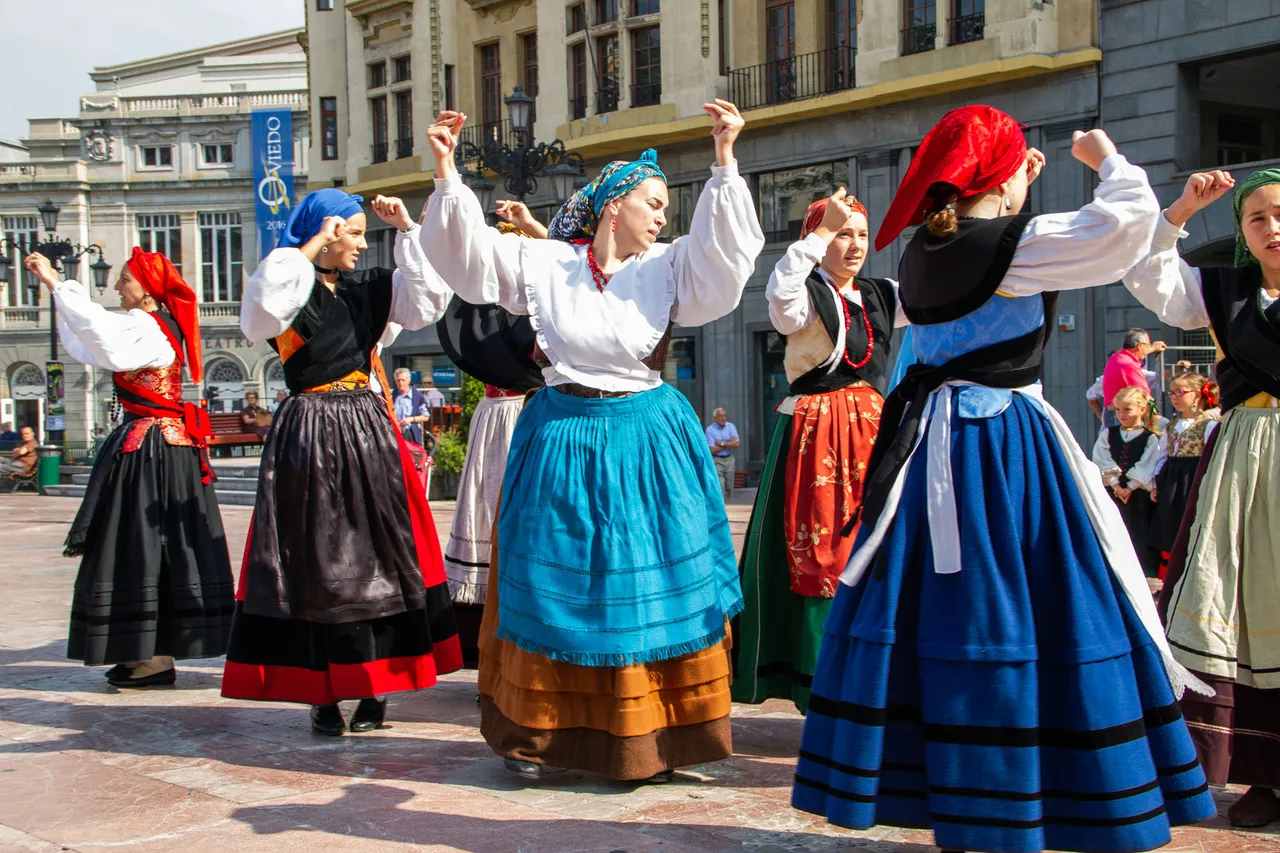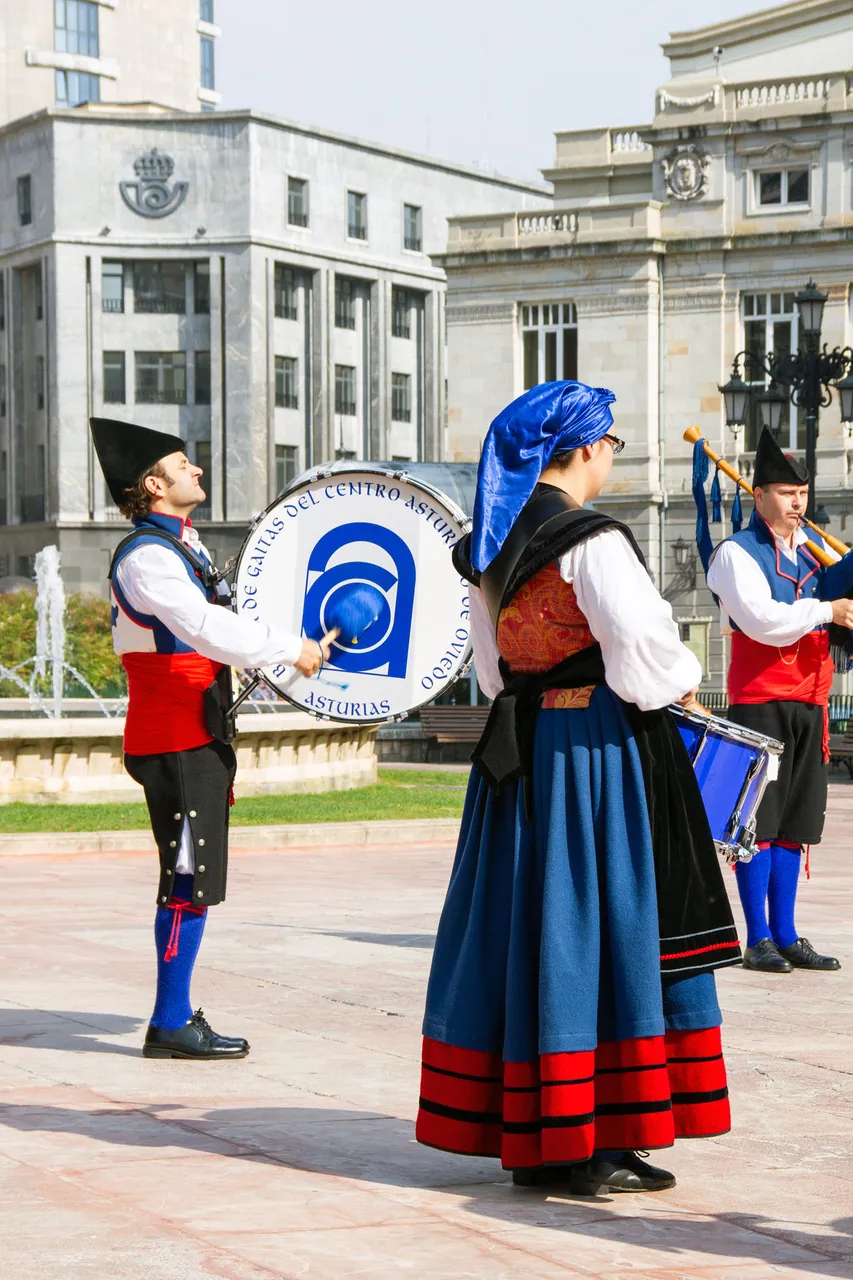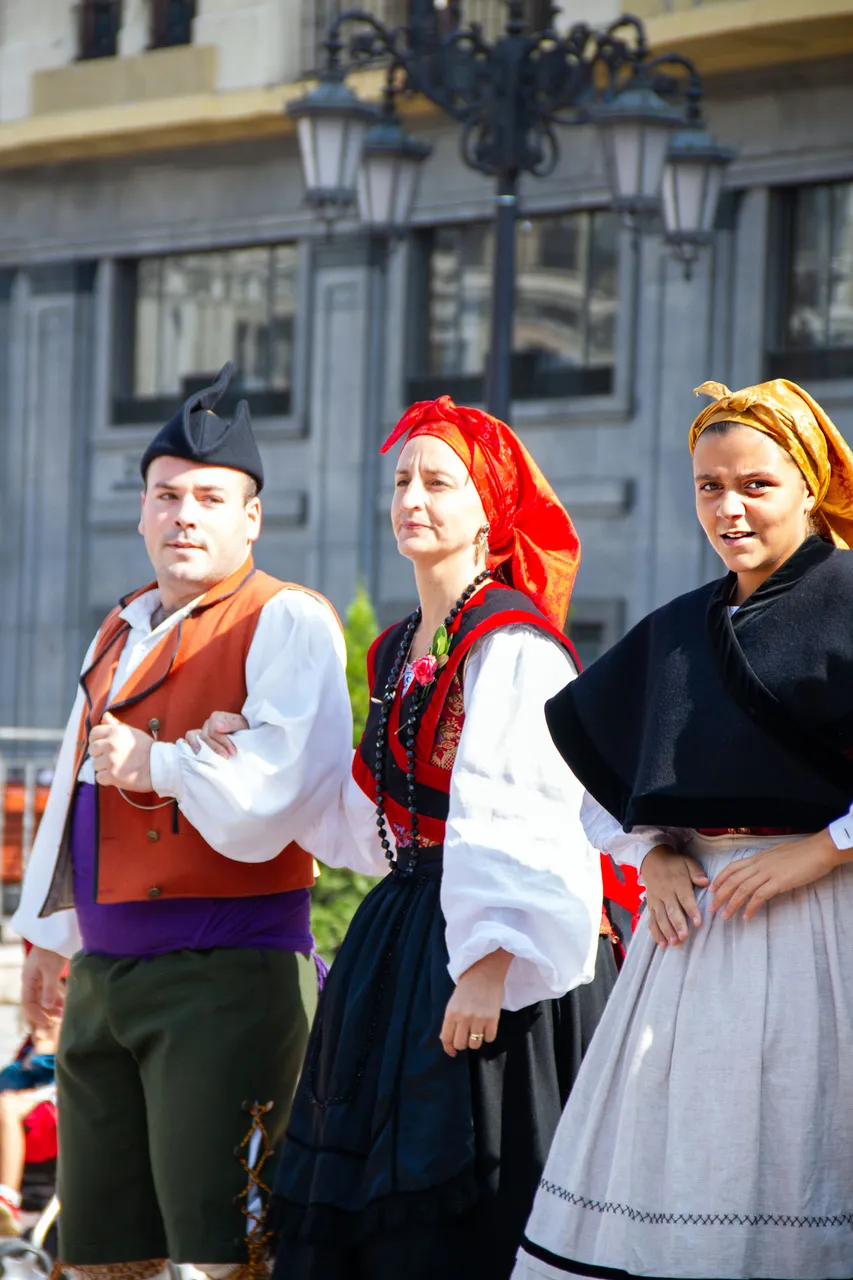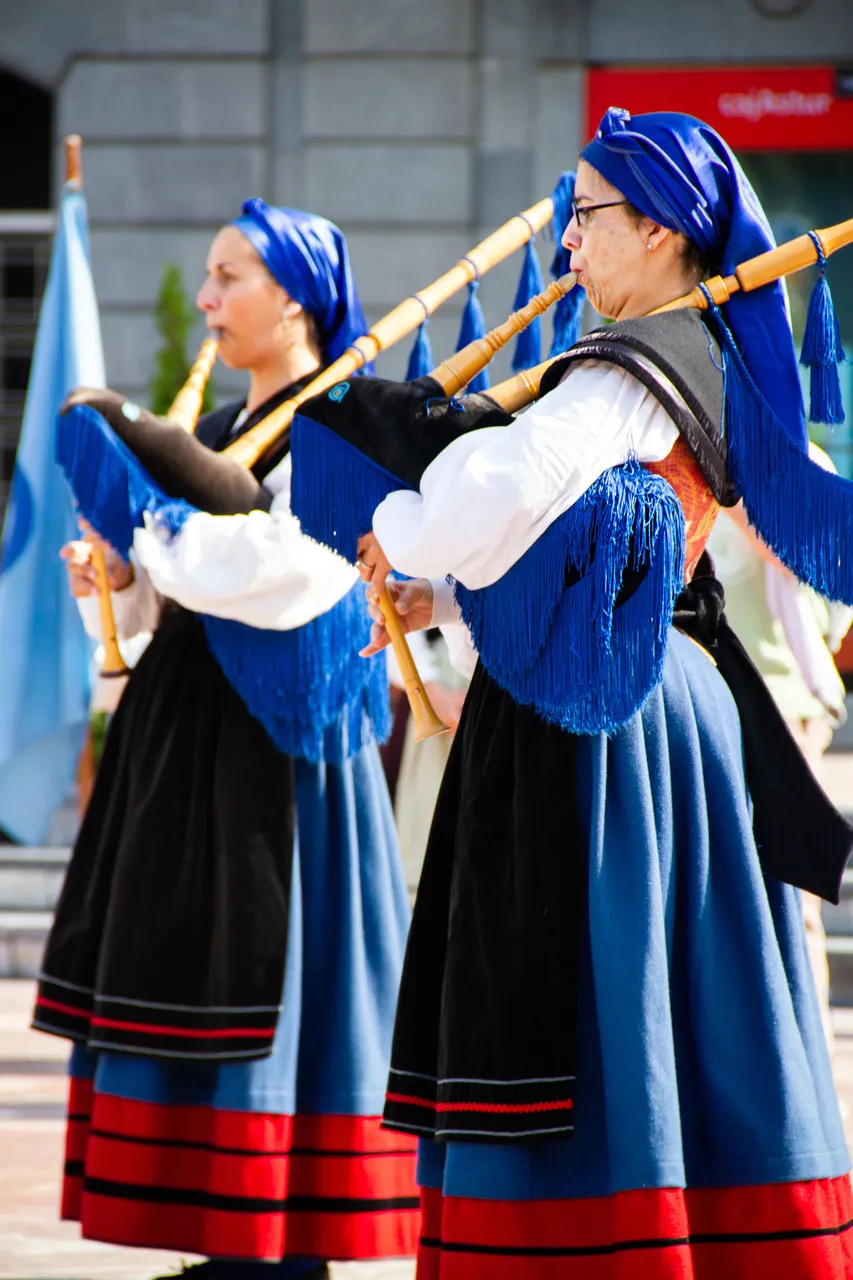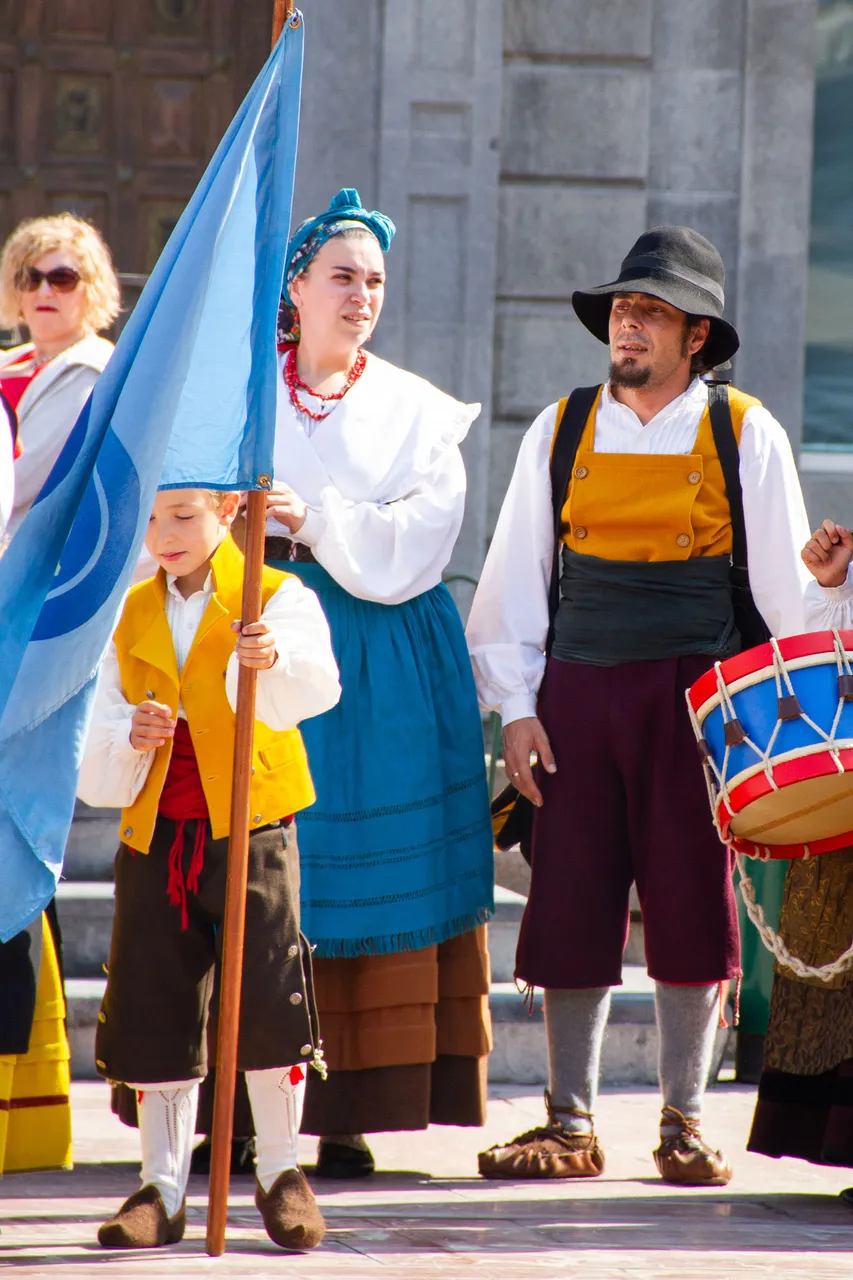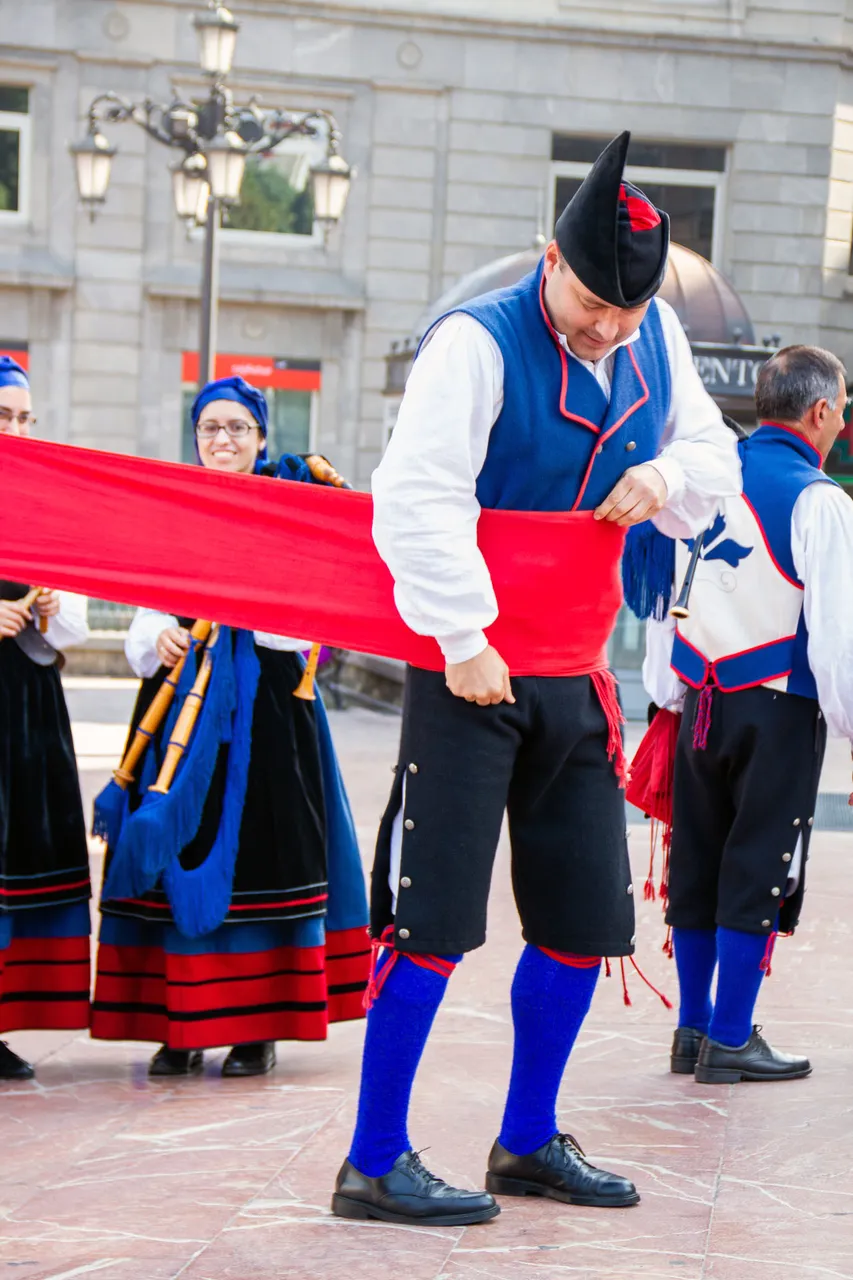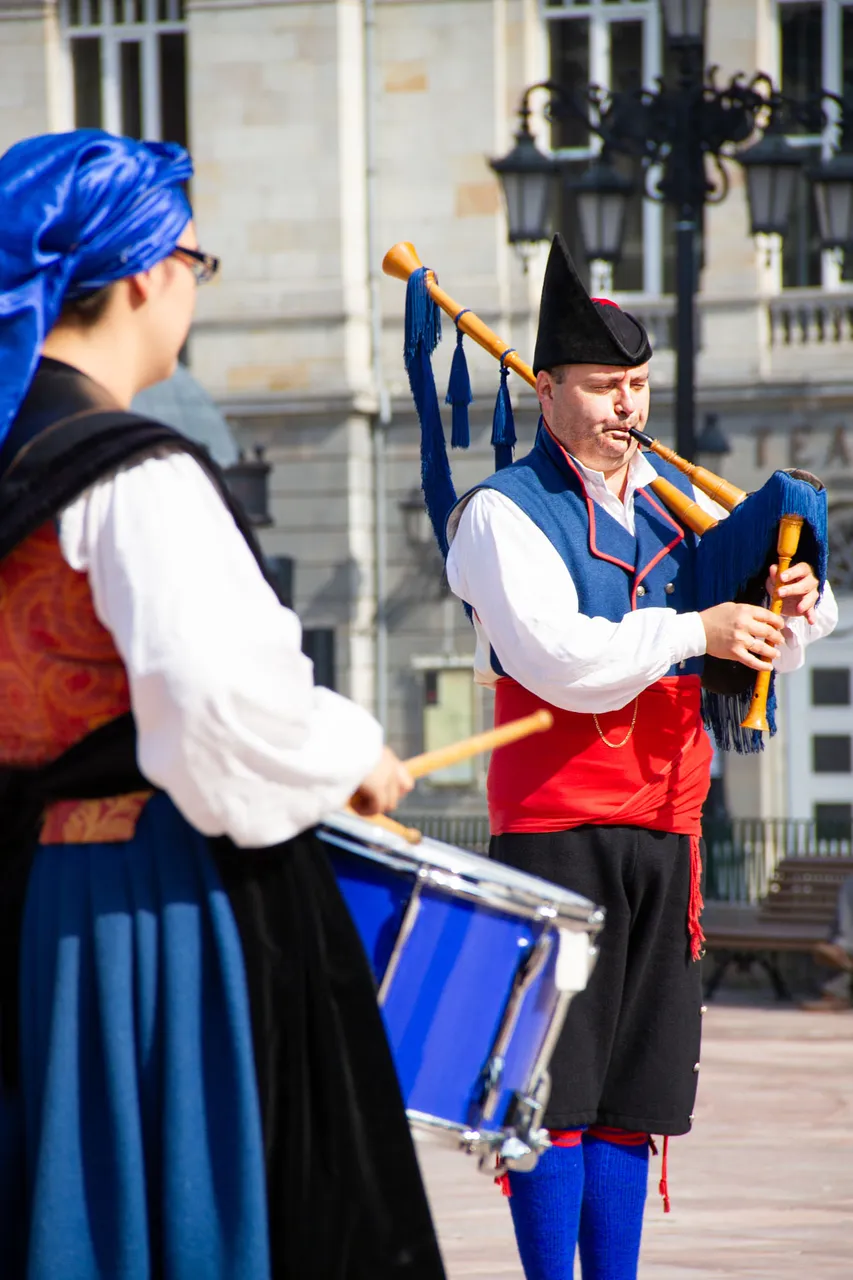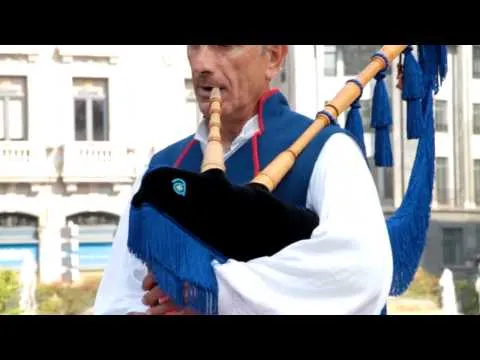
Until moving to Asturias, I shared the popular notion that bagpipes are from Scotland, and that the instrument’s presence necessarily indicates Scottish influence. That turns out to be completely wrong. Bagpipes have a long history in all Europe, from the Balkans to Scandinavia, and definitely in Northern Spain. There’s nothing uniquely Scottish about bagpipes; they weren’t even invented there.
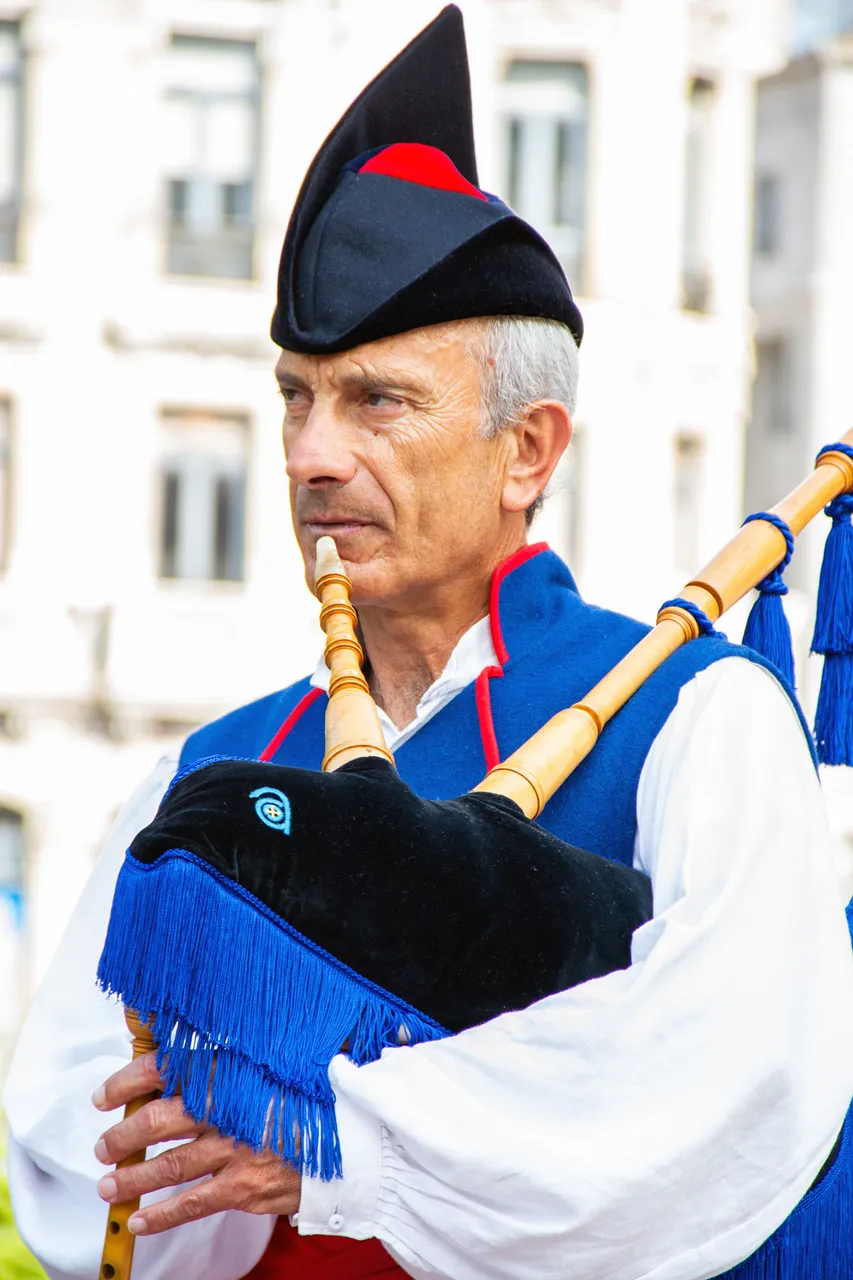
Bagpipes are known in Spain as gaitas, and they’re the most popular traditional Asturian instrument. The Gaita Asturiana is different than other bagpipes, with just two pipes instead of four: the chanter, which is the melody pipe played by the fingers, and the drone, which rests on the shoulder. I impress you with my bagpipe knowledge, no?
Impromptu bagpipe concerts are a common occurrence in Oviedo, and we happened upon one during the first few days of our stay. The music was actually pleasant; usually, upon hearing the wheezy moans of a bagpipe, I clamp my ears and walk swiftly in the opposite direction, but this sound was tolerable. Almost enjoyable, in fact! Check out the video:
Want more bagpipe fun facts? I’m full of them:
- In German, the bagpipe is known as a dudelsack, pronounced “doodle-sack”. For real.
- The first evidence of the bagpipe in Asturias is a 13th century carving in a church in Villaciosa.
- The Scots used bagpipes to frighten off their enemies on the battlefield.
- Well… that’s all I got. Bagpipe knowledge exhausted.
From our Asturias Travel Blog!
Interestingly though, during our remaining for 91 Days locations we haven't encountered other bagpipes, otherwise we would have compiled a best of For 91 Days bagpipe compilation.
More Gaita Asturiana Photos:
